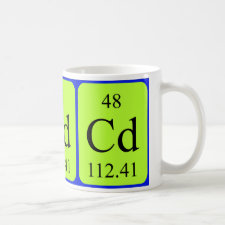
Authors: Luo XB, Xi Y, Yu HY, Yin XC, Luo SL
Article Title: Capturing Cadmium(II) Ion from Wastewater Containing Solid Particles and Floccules Using Ion-Imprinted Polymers with Broom Effect.
Publication date: 2017
Journal: Industrial & Engineering Chemistry Research
Volume: 56
Issue: (9)
Page numbers: 2350-2358.
DOI: 10.1021/acs.iecr.6b04030
Abstract: Cavities and adsorption sites in adsorption materials can be easily blocked in complex media containing solid particles and floccules, which limit the applicability of these materials. This study demonstrates the synthesis of cadmium(II) ion-imprinted polymers (Cd-IIPs) and nonion-imprinted polymers (NIPs) via reversible additionGă˘fragmentation chain transfer precipitation polymerization (RAFTPP). Microspheres of IIPs and NIPs were modified by grafting bicomponent polymer brushes with different ratios of a hydrophilic component, hydroxyethyl methacrylate (HEMA), and a rigid component, styrene. The maximum adsorption capacities of the IIPs and NIPs in pure water are 65.5 and 24.5 mg/g, respectively. Specifically, the 9:1-IIP exhibits excellent antiblockage and anti-interference performance, with an adsorption capacity considerably higher than those of IIPs in simulated wastewater including SiO2 solid particles and floccules. This higher performance suggests that the 9:1-IIP has the rigidity to resist chaff interference from different aqueous media and also possesses good water-compatibility. The 9:1-IIP has a high recognition ability and high selectivity (α > 5.9) to Cd(II) although the surface is grafted with bicomponent polymer brushes. Furthermore, the steric hindrance due to the styrene on the bicomponent polymer brushes, in addition to van der Waals interactions with the interfering chaff, was confirmed to result in a "broom effect". The developed sorbents demonstrate the expected adsorption capacities when applied to environmental samples from factories, which indicate that IIP microspheres grafted with polymer brushes have significant potential for application in complex wastewater treatment
Template and target information: cadmium ion, Cd(II)
![]()


Join the Society for Molecular Imprinting

New items RSS feed
Sign-up for e-mail updates:
Choose between receiving an occasional newsletter or more frequent e-mail alerts.
Click here to go to the sign-up page.
Is your name elemental or peptidic? Enter your name and find out by clicking either of the buttons below!
Other products you may like:
 MIPdatabase
MIPdatabase









